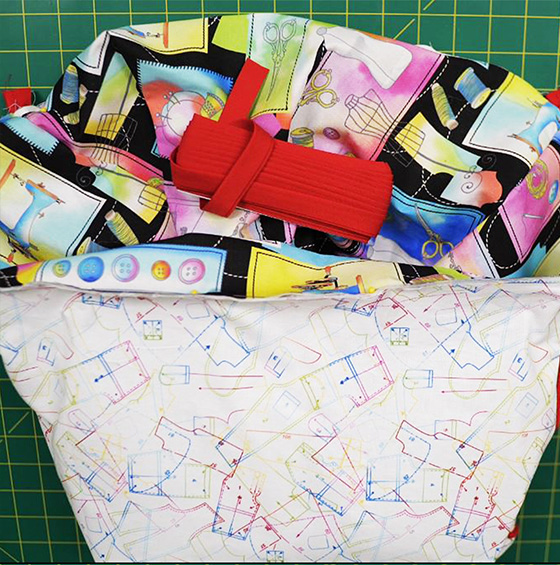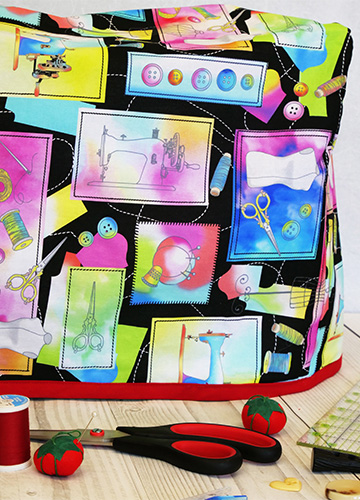What you need:
- 39" (100 cm) Fabric
- 39" (100 cm) Lining
- 39" (100 cm) Medium Weight Fusable Interfacing
- 39" (100 cm) Light Weight Fusible Interfacing
- 80" (203 cm) of Cord for piping
- 1.5" (4 cm) x 80" (203 cm) Visible piping Fabric
- Bias Tape 52” (132 cm) Add extra if covering pockets
- 20" x 9" (25 cm x 50 cm) Mesh
- 12" (30 cm) Clear Vinyl
- Scissors
- Sewing Machine
- Straight Pins
- Thread
- Universal Needle / Super Universal
** Please note that these instructions were created having in mind a standard domestic sewing
machine. Dimensions can vary according to each machine model.

Step 4: Make the pockets
Cut the front-side pocket and side pocket.
Hem or add foldover bias tape onto the top of the
pockets.
Match up the notches of the side pocket pieces and
the side fabric pieces.
Baste stitch the bottom and side edge of the side
pocket to the side fabric pieces with a ½” (1.27 cm)
seam allowance.
Repeat this step with the front pocket pieces and
front fabric pieces.
Tip: If the mesh is stretchy, use an elastic foldover
tape.
Making a seam in the middle of a pocket is optional.

Step 5: Pin the outer pieces together
Using the outer front and side fabric pieces, match
the notches, right sides together.
Place piping between the layers of fabric, pin to hold.
Ensure that the piping length is sticking out .1" (25 mm)
or longer on both sides from where the fabric layers
end. This will make it easier when piping is sewn (ex.
fraying or shifting).
Tip: The raw ends of all layers should be facing the
same way.
With a zipper foot on, sew 5/8” (1.58 cm) pinned area
and back stitch where the fabric ends.
Cut off excess piping.
Repeat step on the other side.

Step 6: Pin and sew the lining pieces
together
Using the lining pieces, match the notches of the
front and the side, right sides together. Pin and sew
pieces together 5/8” (1.58 cm).
Repeat step on the other side.

Step 7: Attach all pieces to finish the cover
With wrong sides together, place the lining inside
the main fabric. Match the seams together, pin and
sew binding around the bottom edge of the fabric to
complete.

















